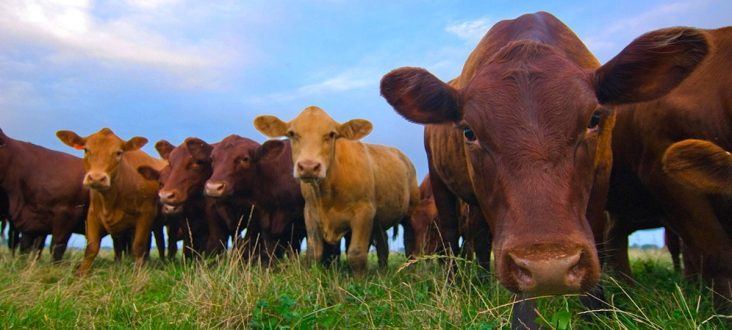Beef industry moves to stabilize market following Tyson Foods fire
by August 20, 2019 10:42 am 1,656 views

The beef industry recently underwent a sudden shock when a Tyson Foods beef processing plant in Holcomb, Kan., closed after a fire tore through the plant, rendering it inoperable. Derrell Peel, extension livestock marketing specialist at Oklahoma State University, said the industry typically maintains its equilibrium with supply being close to demand.
The sudden loss of the Holcomb plant, however, abruptly reduced slaughter capacity by 6% across the industry.
“It is much like throwing a rock into a pond resulting in a big initial splash and ripple effects spreading out in all directions,” Peel said. “The initial splash of the plant closure included a dramatic set of market reactions.”
He said with fresh beef production suddenly decreased, boxed beef prices rose sharply to ration a suddenly limited supply. Choice boxed beef prices increased by over $22 per hundredweight, or 10.3%, in one week.
“This illustrates one of the most important functions of markets, one that is commonly taken for granted, markets make sure that we don’t run out of things. With less supply available, the market uses higher prices to determine how limited beef supplies will be allocated. It is a common market reaction,” Peel added.
He explained when prices start to rise high enough, demand will naturally fall. Peel said the complex set of markets in the cattle and beef industry are all impacted initially. He said live and feeder futures dropped sharply for two days before they began to moderate.
Feeder cattle markets also decreased in the face of lower feed prices and the uncertainty roiling all markets, he said.
“The sudden shock of the current situation and the resulting big initial market reactions encourage buyers and sellers to change plans, incur additional costs, and react quickly to new arbitrage opportunities,” he said.
The industry trade group, National Cattlemen’s Beef Association (NCBA) is working with the U.S. Department of Agriculture (USDA) to try and facilitate market recovery.
Colin Woodall, senior vice president of government affairs for NCBA, contacted Greg Ibach, USDA undersecretary for marketing and regulatory programs, and Dr. Mindy Brashears, USDA deputy undersecretary for food safety, asking how remaining slaughter capacity can absorb an estimated 8.2% increase in weekly slaughter (or 3.3 hours more per week) to compensate for the Tyson closure.
Woodall asked the USDA officials to give plant inspectors, along with AMS graders, flexibility to move to other plants and work expanded shift hours, including weekends, to help the industry move the extra cattle through the system. Ibach has said in a statement USDA is ready to grant those requests and provide additional staff.
Government officials are also considering an option to suspend hours of service for drivers hauling cattle for the nine months it will take for Tyson Foods to rebuild the plant.
Peel said the past may provide some indications as to what the industry can expect going forward. In December 2000, a ConAgra beef plant was destroyed by fire and never reopened. Most of the negative impacts on fed cattle prices subsided in three to six weeks after that fire.
“Packing capacity relative to cattle supplies is somewhat tighter this time so the impacts may be slightly larger or longer-lived,” he said. “Nevertheless, boxed beef and cattle markets will likely adjust relatively quickly in the coming weeks with final adjustments depending on the duration of the plant closure.”
